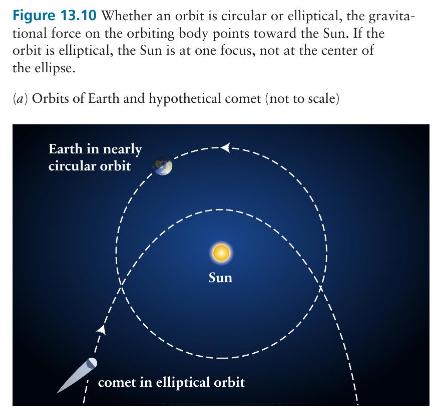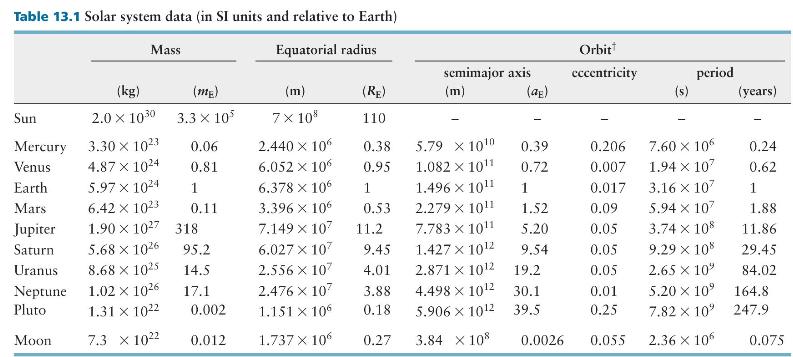(a) If we ignore the influence of other celestial objects, the Earth-Sun system is isolated, and so...
Question:
(a) If we ignore the influence of other celestial objects, the Earth-Sun system is isolated, and so it must rotate about the system's center of mass. Using the data in Table 13.1, determine how far from the center of the Sun the center of mass of the system is and what fraction of the Sun's radius this distance is.
(b) As it passes the point shown in Figure 13.10b, does the comet speed up, slow down, or travel at constant speed? If the trajectory shown is part of an ellipse, where is the comet's velocity greatest? Where is it smallest?



Fantastic news! We've Found the answer you've been seeking!
Step by Step Answer:
Related Book For 

Question Posted:





